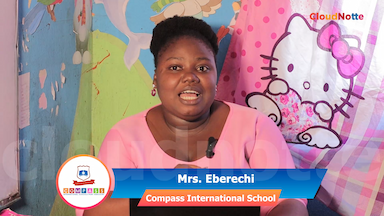Bullying is a pervasive issue in schools that affects students’ emotional, psychological, and academic well-being. It can manifest in various forms, including verbal, physical, and cyberbullying, making it a complex challenge for students, parents, and educators alike. While the presence of bullies can create a hostile environment, it is essential to equip students with the tools and strategies to effectively deal with bullying. Let’s explore practical ways to confront bullying, foster resilience, and create a supportive school culture.
Understanding Bullying: The First Step Towards Resolution
Before addressing how to deal with bullying, it’s crucial to understand what constitutes bullying. According to the National Center for Educational Statistics, bullying involves unwanted aggressive behavior that involves a real or perceived power imbalance. This behavior is repeated over time and can lead to significant emotional distress for the victim. Recognizing the signs of bullying—such as withdrawal from social interactions, changes in academic performance, or unexplained physical injuries can help students and teachers take appropriate action.
Strategies for Students Facing Bullying
-
Stay Calm and Confident One of the most effective ways to deal with a bully is to maintain composure. Bullies often thrive on the emotional reactions of their victims. By staying calm and projecting confidence, a student can diminish the bully's control over the situation. Practicing assertiveness can help students respond effectively without escalating the conflict.
-
Speak Up Silence often perpetuates bullying. A student who doesn’t speak will likely face more bullying, it’s vital to speak about your experiences. This can mean directly confronting the bully in a calm and assertive manner or reporting the behavior to a trusted adult, such as a teacher, school counselor, or parent. Open communication not only helps the victim feel supported but also signals to the bully that their behavior is unacceptable.
-
Document the Incidents Keeping a record of bullying incidents can be a powerful tool. Students should note the dates, times, locations, and details of each occurrence, as well as any witnesses. This documentation can provide evidence when reporting the bullying to school authorities and can help facilitate a more effective response.
-
Seek Support from Friends Building a strong support network of friends can provide emotional reassurance and deter bullies. Encouraging students to surround themselves with positive peers can create a buffer against bullying behavior. Friends can offer companionship, protection, and encouragement, making it easier for the victim to face their bully.
-
Engage in Activities Participating in extracurricular activities can help students build confidence and find their passions. Whether it’s joining a sports team, a club, or a community service group, these activities provide opportunities to make new friends and develop a sense of belonging. Involvement in positive environments can also help students cope with bullying by shifting their focus and fostering resilience.
The Role of Educators and Parents
While students must learn to navigate bullying situations, the role of educators and parents is equally crucial. Here are some strategies they can employ:
-
Create a Safe Environment Schools should prioritize creating a safe and inclusive environment where bullying is not tolerated. This involves implementing clear anti-bullying policies, providing staff training, and fostering open communication channels for students to report bullying incidents.
-
Encourage Empathy and Kindness Educators can play a vital role in promoting empathy and kindness among students. Integrating social-emotional learning into the curriculum can help students understand the impact of their actions and encourage them to support one another.
-
Monitor Social Interactions Parents and educators should be proactive in monitoring social interactions, both in-person and online. This includes being aware of students’ social media activity and discussing responsible digital citizenship. Encouraging open conversations about online behavior can help prevent cyberbullying.
-
Provide Resources and Support Schools should offer resources, such as counseling services, workshops, and support groups, to help students cope with bullying. Parents can also seek external resources, such as counseling or support groups, to provide additional assistance for their children.
Conclusion
Dealing with bullying in school is a multifaceted issue that requires the collaboration of students, educators, and parents. By understanding the nature of bullying and implementing effective strategies, students can empower themselves to confront bullies and build resilience. Creating an environment that promotes empathy, kindness, and open communication can significantly reduce bullying incidents. Ultimately, fostering a culture of respect and support will not only benefit individual students but also contribute to a healthier, more inclusive school community. Together, we can take meaningful steps to combat bullying and create a safe space for all students to thrive.
[Best Edutech Software: Online examination Admission School fee Laboratory Virtual Lab Subject Report Sheet Early Grade Result Grading Online Class Assessment Assignment Attendance Message Communication. Everything in one. Signup Now!





